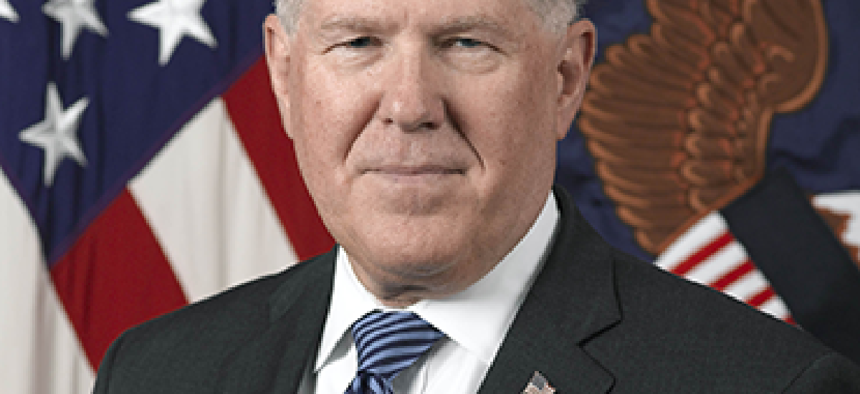DOD advances Better Buying Power effort

Officials want DOD's workforce to move past solutions that just fulfill requirements, in favor of creativity and leadership.

Frank Kendall says acquisition workforce to reach greater heights. (DOD photo)
Defense Department officials laid out on Nov. 13 the next version of their Better Buying Power Initiative, with an emphasis on an acquisition workforce that thinks critically about defense purchasing.
“Our workforce has tended to look for ‘school solutions,’” Frank Kendall, undersecretary of defense for acquisition, technology and logistics, said during a briefing at the Pentagon. In other words, they ask themselves, “What’s the right answer? I’ll do that because it’s what leadership wants.”
Kendall wants to change that way of thinking. Among 36 initiatives in Better Buying Power 2.0, defense officials want “to improve the professionalism of the acquisition workforce.”
Kendall said DOD has many capable and smart workers, “but we can be better. We can have a deeper bench.”
With the new initiative, officials intend to focus first on key leadership positions, such as program managers, chief engineers and contracting officers, all of whom have a lot of responsibility for leading a program to a successful outcome.
Officials want to improve the career certification levels for these acquisition employees. Kendall and some other officials think the certification level has become essentially a box to check, rather than an indicator of real skill.
“We want to it to really mean something,” Kendall said. “When someone gets to a level where they are ready to take on a senior management role in a major program, that should be something that really demonstrates a high level of capability.”
Officials are still working out the exact changes for Better Buying Power 2.0. Currently they are gathering input from the community about the draft document they released. They are writing guidance on the 36 initiatives, roughly half of which are carried over from the Better Buying Power Initiative released in 2010. Kendall said he expects to roll out the final set of initiatives and implementation guidance in January.
As he seeks to build up DOD’s acquisition workforce, Kendall is also improving how the department defines “technically acceptable” as the lowest price technically acceptable option gains influence in a time of tight budgets. LPTA is part of a trend in defense acquisition in which the department sets a standard and chooses the lowest priced bid that meets the standard in a competition.
“There’s been a reaction to some of the movement in this direction by the department from industry,” Kendall said. He added that industry’s concern has some merit. DOD needs to ensure that it is not just choosing the lowest price.
In all, like its predecessor, the main emphasis of Better Buying Power 2.0 is to find savings.
“And it’s still true today as it was then,” Ashton Carter, deputy defense secretary, said during the briefing. “Every dollar not wasted is a dollar that can be reinvested in new capability.”





